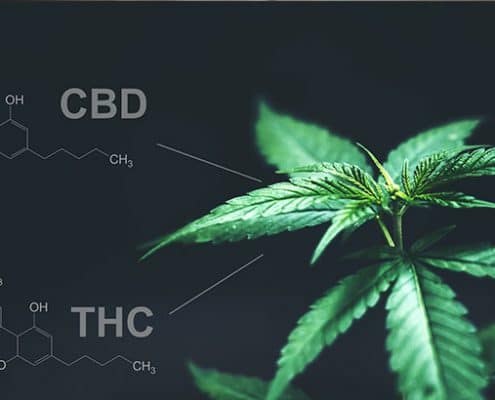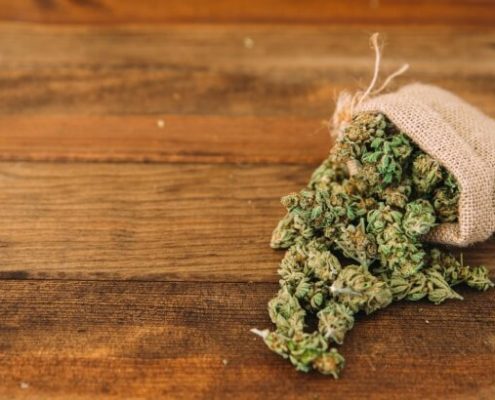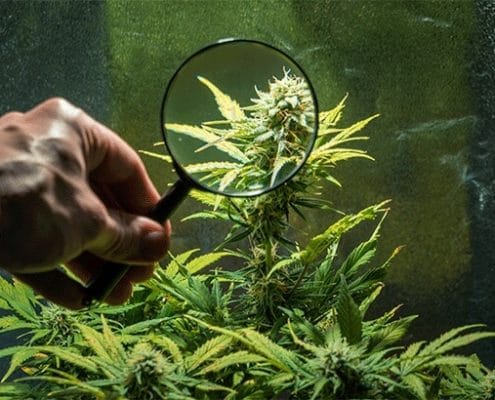How to Take CBD Oil: Ways and Facts 5 Aug, 2021
How to Take CBD Oil: Ways and Facts

CBD oils are convenient, discreet, and versatile, so it’s easy to see why so many people choose to take their CBD in oil form. But one positive aspect of CBD oil—its versatility—also makes it confusing to newcomers. There are many different ways to use CBD oils, so people can be left wondering how to start. But if you’re unsure of how to take CBD oil, this guide is for you. Below, we’re going over everything you need to know about the different ways you can use CBD oil.
Four Ways To Take CBD Oil
The body can absorb cannabidiol (CBD) in more than one way, which is why there are so many different types of CBD products. There are four main ways to take CBD: placing it under the tongue, eating or drinking it, applying it to your skin, and inhaling it. Let’s go over how each of these delivery methods works and which CBD products utilize each method.
-
Under the Tongue

CBD Products That Can Be Taken Under the Tongue
CBD tinctures, CBD oils, and CBD sprays are similar products that can all be taken sublingually. CBD tinctures and CBD oils both usually come in small bottles with dropper lids, but may also come in small bottles with spray lids, in which case they’re called CBD sprays.
You may see people use the terms “CBD tincture” and “CBD oil” interchangeably, or you may see things called “CBD oil tinctures.” However, technically, CBD tinctures and CBD oils are different products. CBD oils and tinctures both contain CBD extract, but CBD oils have an oil base and CBD tinctures have an alcohol base. This allows CBD tinctures to dissolve in water more easily than CBD oils.
How to Take CBD Under the Tongue
To take a CBD oil, CBD tincture, or CBD spray sublingually, measure out your dosage of CBD and place it under your tongue. Hold it there for 30 seconds, then swallow it. Typically, you’ll experience the effects of CBD around 15 to 30 minutes after taking it sublingually.
-
Eating or Drinking
A popular way to take CBD is by eating or drinking it. When you swallow an edible CBD product, your body absorbs it through your digestive system. Ingestion leads to slower absorption and a slower onset of effects. While edible CBD products take longer to absorb, they have several other advantages, such as convenience, dosage accuracy, and versatility.
Edible CBD Products
Many CBD products are edible, including:
- CBD Oils and Tinctures: You can take CBD oils and tinctures sublingually, but you can also choose to simply swallow them.
- CBD Capsules: CBD capsules are a great option for people who want to take a consistent dose of CBD. They’re a favorite among people who take CBD like a daily supplement.
- CBD Edibles: There are a vast assortment of ready-made CBD edibles available today, including CBD gummies, chocolates, cookies, cakes, hard candies, and drinks.
- Homemade CBD Edibles: You can use CBD oils and CBD tinctures to make your own CBD-infused edibles at home. Not sure where to start? Some popular infusion choices include adding CBD to coffee, smoothies, salad dressings, frostings, and cocktails.
How to Take Edible CBD Products
To take an edible CBD product, simply eat or drink your desired dosage. Typically, you’ll feel the effects of edible CBD products around 30 to 90 minutes after eating them, but it may take up to two hours.
-
Topical Application
If you have aches, pains, or skin issues, you may want to try a CBD topical. Topical products are meant to be applied to the skin. Most topical products have a localized effect, which means they only affect the area you apply them to. Cannabinoids are too large to breach the bloodstream when they’re applied to the skin. So, topical CBD products aren’t delivered to your entire endocannabinoid system, but rather just to the endocannabinoid receptors in the area you apply them. One exception is transdermal patches, which are specifically designed to deliver products into the bloodstream.
Types of CBD Topicals
There are a wide range of CBD topicals for the face and body, including CBD lotions, creams, balms, serums, moisturizers, and transdermal patches. Many people also enjoy making their own CBD topicals, which you can do by adding a concentrated CBD oil or tincture to the moisturizer of your choice, such as coconut oil or your favorite lotion.
How to Use CBD Topically
In general, you use CBD topicals by applying them to clean, dry skin. However, different types of CBD topicals may need to be applied differently for maximum effectiveness, so be sure to closely follow the instructions that come with your CBD topical.
-
Vaping CBD
The fourth way you can use CBD is by vaping it. Some CBD oils are specifically designed to be vaporized and inhaled. When you inhale a vapor that contains CBD, the CBD rapidly passes into the bloodstream, leading to a fast onset of effects. These fast-acting effects are one reason people choose to vape their CBD. Another reason people prefer this consumption method is the experience. Some people love the experience of vaping and the aromas and tastes that come alongside it.
Types of CBD Vape Products
Some examples of CBD vape products include disposable CBD vape pens, CBD vape cartridges, and CBD vape oils that are specifically meant to be added to a vaporizer.
Do not try to vape a CBD oil or CBD tincture that wasn’t designed to be used in a vaporizer. This can be extremely dangerous, especially in the case of tinctures, which are alcohol-based and therefore highly flammable.
How to Use a CBD Vape
In general, you use a CBD vape by inhaling the vapor that comes from your device. But every CBD vape has different operating instructions, so follow these carefully to make sure you’re using your vaporizer safely and effectively.
FAQ About How to Take CBD Oil
Q: What are the health benefits of CBD?
A: While cannabinoid research is still in its infancy, some studies suggest that CBD may help ease pain, anxiety, depression, nausea, and sleep issues. Some studies also suggest that CBD may have anti-inflammatory and neuroprotective properties.
Q: How much CBD should I take?
A: There’s no “right” amount of CBD to take. There’s only the amount that’s right for you and your goals. In general, we recommend starting with a smaller dose of CBD, then gradually increasing your dosage until you achieve your desired effects.
Q: Do I need to refrigerate CBD oil?
A: Typically, no. Most CBD oils keep best when you store them in a cool, dark place, such as a cupboard. It’s possible that some CBD products would need to be refrigerated due to their unique formulations. If your CBD product needs to be refrigerated, that should be noted on its packaging.
Q: What does full-spectrum mean?
A: Some hemp CBD products are described as containing “full-spectrum CBD.” This means that the product contains the full range of plant extracts from the hemp cannabis plant, which includes essential oils, terpenes, and other cannabinoids. Many people believe that full-spectrum CBD products are more effective, thanks to a concept called the “entourage effect.” According to the entourage effect, cannabinoids are more effective when taken with terpenes and other cannabinoids. However, some don’t like the idea of full-spectrum products, since they can contain trace amounts of THC (hemp-derived products can contain up to 0.3% THC). If you don’t want to consume any THC, you may want to look for “broad-spectrum CBD” products. Broad-spectrum CBD products contain a wide range of natural extracts from hemp plants, but do not contain THC. You may also want to consider CBD isolate products, which contain only pure CBD and no other cannabinoids.
Q: Is hemp CBD oil the same thing as hemp oil?
A: No, hemp CBD oil is not the same thing as hemp oil. The main difference between these two oils is CBD content. CBD oil contains concentrated CBD isolate that has been extracted from the leaves, flowers, and stems of the hemp plant. Hemp oil, on the other hand, is made by extracting oil from hemp seeds, which don’t contain CBD. So, hemp CBD oil will have a high amount of CBD, while hemp oil will have little to no CBD.
Q: Is CBD oil FDA-approved?
A: Over-the-counter CBD oils are not regulated by the federal government at this time, so there are no Food and Drug Administration approved CBD oils. There is one FDA-approved prescription medication that could be described as a CBD oil: Epidiolex. Epidiolex is a medication for certain rare epilepsy disorders. It’s active ingredient is cannabidiol (CBD), it has an oil base, and it is administered orally.
Final Thoughts
Still have questions about how to take CBD oil? We’re here to help. Our team is always happy to share more information about CBD products and other cannabis products. You can get in touch with an Essence team member by calling your local Essence Dispensary location or by messaging us through our website.







